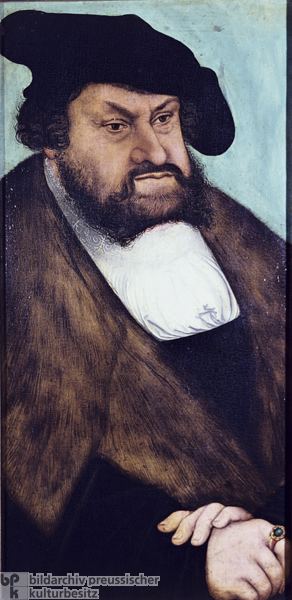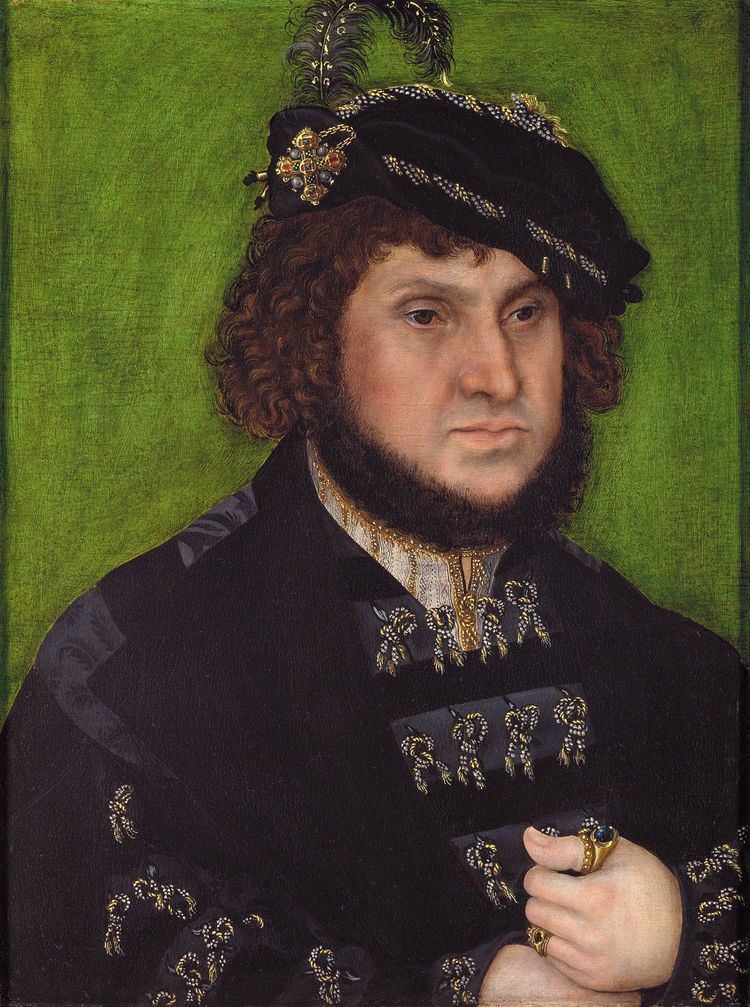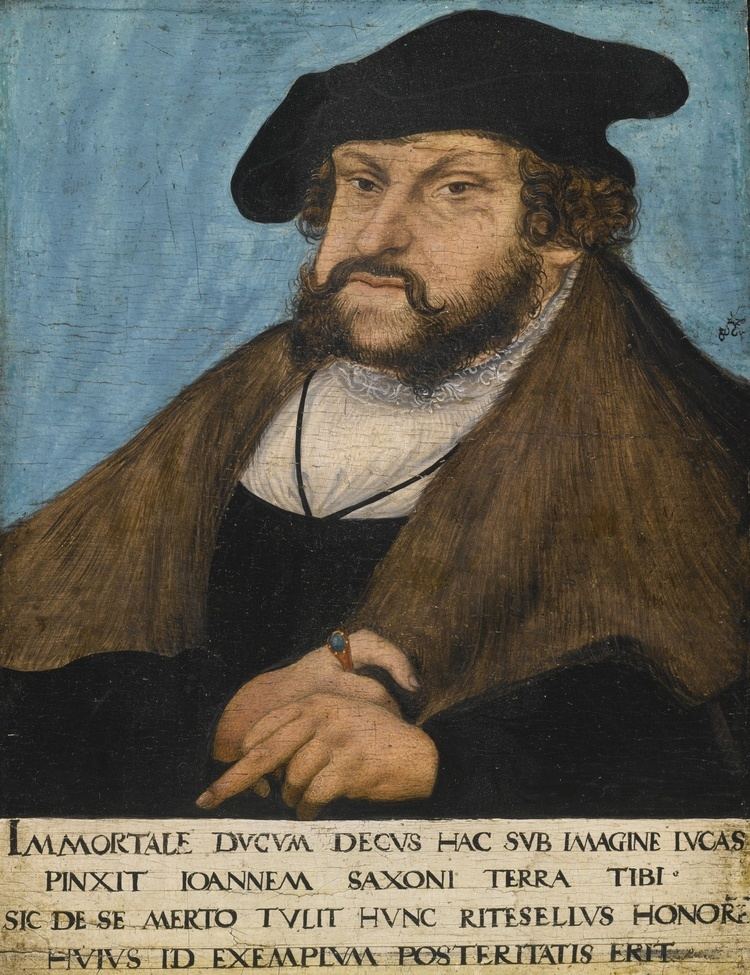Name John, of | ||
 | ||
Reign 5 May 1525 – 16 August 1532 Issue John Frederick I, Elector of SaxonyMaria, Duchess of PomeraniaJohn Ernest, Duke of Saxe-Coburg Children John Frederick I, Elector of Saxony, John Ernest, Duke of Saxe-Coburg, Maria of Saxony, Duchess of Pomerania Parents Ernest, Elector of Saxony, Elisabeth of Bavaria, Electress of Saxony Siblings Frederick III, Elector of Saxony Similar People John Frederick I - Elector of, Frederick III - Elector of Saxony, Ernest - Elector of Saxony, Sibylle of Cleves | ||
Johann (30 June 1468 – 16 August 1532), known as Johann the Steadfast or Johann the Constant, was Elector of Saxony from 1525 until 1532. He was a member of the House of Wettin.
Contents

Biography

Born in Meissen, he was the fifth of the seven children of Ernest, Elector of Saxony and Elisabeth of Bavaria.
From 1486 onward he was the heir presumptive of his childless brother Frederick the Wise; when he died in 1525, Johann inherited the title of Elector. As his nickname "The Steadfast" indicates, he resolutely continued the policies of his brother toward protecting the progress of the Protestant Reformation. In 1527 the Lutheran Church was established as the state church in Ernestine Saxony, with the Elector as Chief Bishop. He was a leader of the Schmalkaldic League of Protestant states formed in 1530 to protect the Reformation. As his nickname betrayed, he had the same positive attitude as his brother to the Reformation. His steadfastness and his courage to stand to his confession probably brought him the most fame with his contemporaries. Christian beliefs were also the basis of his political decisions, which were regarded as very just. In political matters, however, he often hesitated. In his collaboration with Landgrave Philip of Hesse, with whom he was closely connected by virtue of his common denomination, Philip was the driving force and spoke out more for an aggressive foreign policy. John, on the other hand, was particularly concerned with the question of whether to defend himself as a Protestant against the Emperor.
As the patron of Martin Luther, Johann maintained a very close, almost friendly relationship with the leading theologian of the Protestants. Luther also often expressed a positive opinion about John. Especially for his behavior at the Augsburg Diet in 1530, he praised him very much: "I am sure that the Elector Johann of Saxony had the Holy Spirit. In Augsburg he proved this admirably by his confession. John said, "Tell my scholars that they are doing what is right, praise and honor God, and take no regard for me or my country." By his insistence on the Protestant profession of faith, he is even to dismiss the Protestant theologians that behave too compliantly to the emperor.
In 1527 the Evangelical-Lutheran League was founded, whose bishop was the elector. In 1529 he belonged to the princely representatives of the Protestant minority (protestation) at the Reichstag in Speyer.
In the almost 40 years that governed Johann as a duke over Kursachsen, he was often concealed by the person of his brother Friedrich, who, as the eldest of sex and the bearer of the kurhut, decisively determined the policy of the Saxons. Even in our time Johann is wrongly in the history and politics of Kursachsen at the beginning of the Reformation mostly in the background and finds in contrast to his brother Friedrich and his son and successor Johann Friedrich little attention in research and literature.
The Evangelical Church in Germany honors its significance for the Reformation, however, with a memorial day in the Evangelische Namenkalender on 16 August.
He died in Schweinitz. After his death he was, like his brother Frederick, buried in the famous Castle Church in Wittenberg with a grave by Hans Vischer. He was succeeded by his eldest son Johann Frederick.
Marriage and children
In Torgau on 1 March 1500 Johann married firstly Sophie of Mecklenburg-Schwerin, daughter of Magnus II, Duke of Mecklenburg. They had one son:
- Johann Frederick I, Elector of Saxony (b. Torgau, 30 June 1503 – d. Weimar, 3 March 1554).
In Torgau on 13 November 1513 Johann married secondly Margaret of Anhalt-Köthen. They had four children:
- Maria (b. Weimar, 15 December 1515 – d. Wolgast, 7 January 1583), married on 27 February 1536 to Duke Philip I of Pomerania-Wolgast
- Margaret (b. Zwickau, 25 April 1518 – d. Liestal, Switzerland, 10 March 1545), married on 10 June 1536 to Hans Buser, Freiherr of Liestal.
- John (b. and d. Weimar, 26 September 1519)
- John Ernest, Duke of Saxe-Coburg (b. Coburg, 10 May 1521 – d. Coburg, 8 February 1553).
